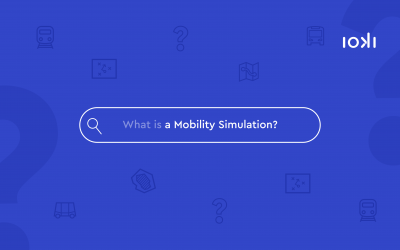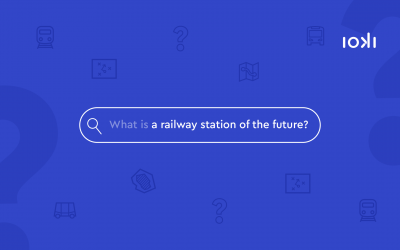The solution to the problem? A detailed and data-based mobility analysis that breaks down the initial question into its individual components, gradually identifies optimization potential for existing transport systems and structures and thus takes away the fearsome aspect. Because if you look at everything in order, the beginning is often already made and the individual steps quickly result in an insightful overall picture.
By using the example of planning an on-demand service we summarize exactly how such an analysis could be carried out step-by-step and what results could be achieved.
Step 1: Data-driven analysis of the planning area
With a detailed insight into the structures and local conditions, already known but also unknown problems of the selected region can be identified and initial recommendations for action can be derived.
Step 2: Simulation of mobility demand
The simulation of detailed door-to-door mobility chains of a selected target group, among other things on the basis of anonymous movement data, provides important insights into the needs and mobility pattern of the target group.
Step 3: Identification of potential on-demand areas
On the basis of the two previous steps, targeted areas can now be identified in which a new mobility solution, such as on-demand services, can make sense.
Step 4: Simulation of operations
The optimal vehicle mix is determined for various on-demand product configurations, thus defining the right mix of costs and service quality.
Step 5: Statements about profitability
By combining supply and demand, it is finally possible to make precise statements about the profitability of the planned on-demand service.
Is data the new gold?
The question remains as to how all these steps can be implemented profitably. The basis of a successful mobility analysis with corresponding predictive power is a comprehensive data basis, which can be divided into two categories:
- Data on infrastructure and geography: This information can be used to obtain a precise idea of the spatial units and the spatial structure. Should the new mobility offer be implemented in the city or in the countryside? Is it an industrial or a residential area? Are there any special features in the topography? What about the local infrastructure?
- Sociodemographic and mobility data: The second data branch provides further insights into the research area, now mainly from a micro perspective. The population structure (density and distribution), the vehicle population, information about commuter habits in the region and accessibility as well as availability of public transport can be examined.
Based on this data, a detailed area analysis can be carried out. The result can, for example, be presented in a microscopic simulation model that provides door-to-door chains of routes and insights into the mobility habits and needs of the population. From these simulated routes, the potential of an on-demand operation can be derived by comparing different means of transport at any time of day in order to plan the operational business on the basis of different scenarios and configurations.
In a nutshell, this means that a mobility analysis can be used to make almost any conceivable statement about the mobility situation in the selected area. Thanks to various simulation options, different scenarios can be provided according to each initial question, for example how the existing public transport offer can be meaningfully supplemented and expanded by using on-demand offers.
You are interested in the topic of mobility analytics and would like to learn more about it? We heartily invite you to our IMN Business Club on November 13th: In a total of three breakout sessions we will focus in detail on the procedure for a mobility analysis and its benefits.



